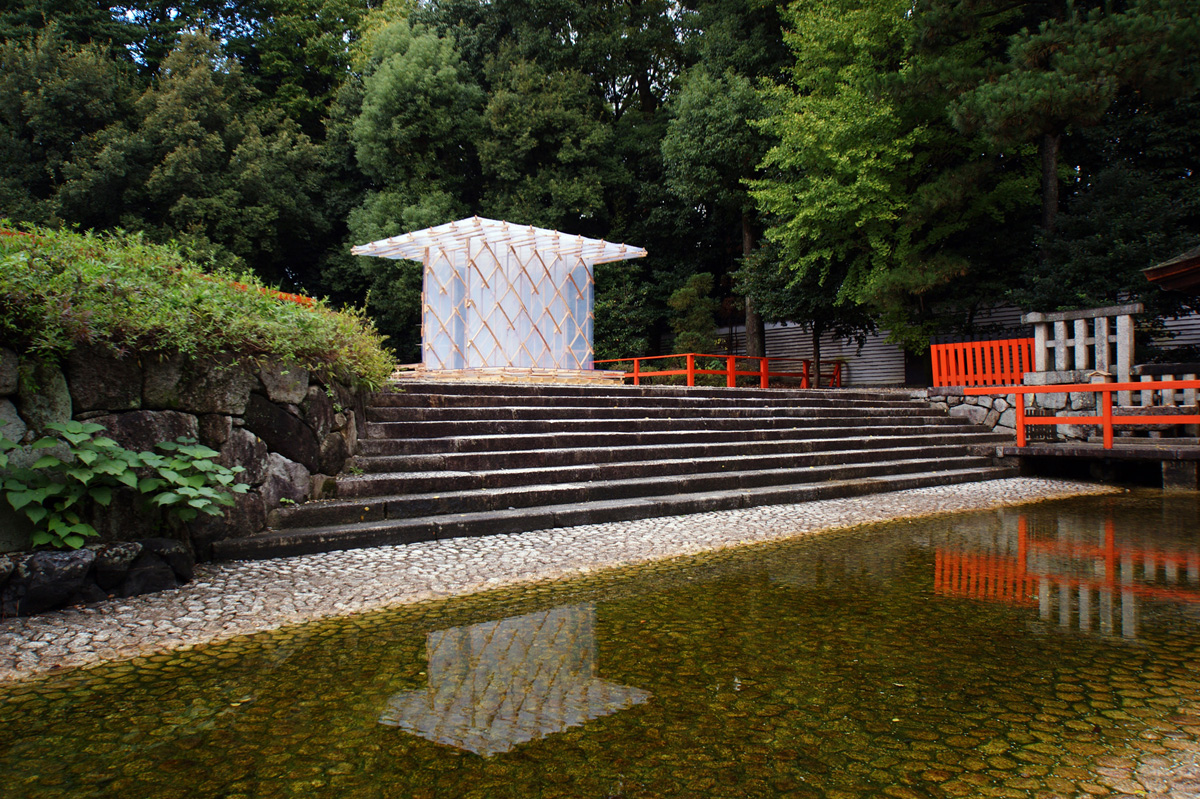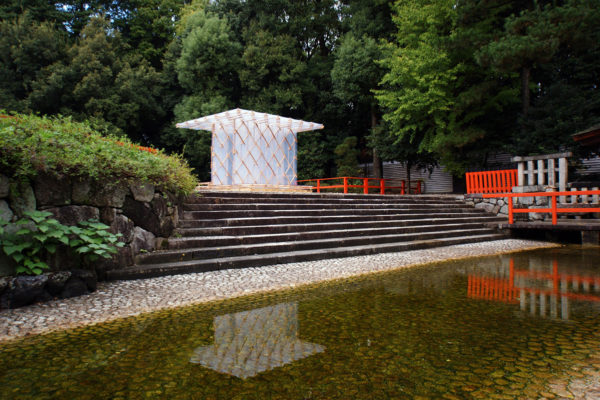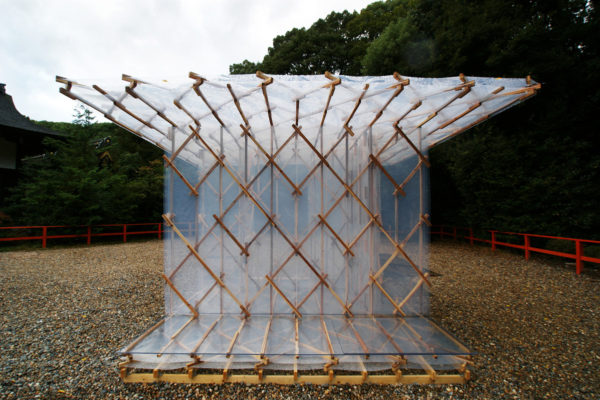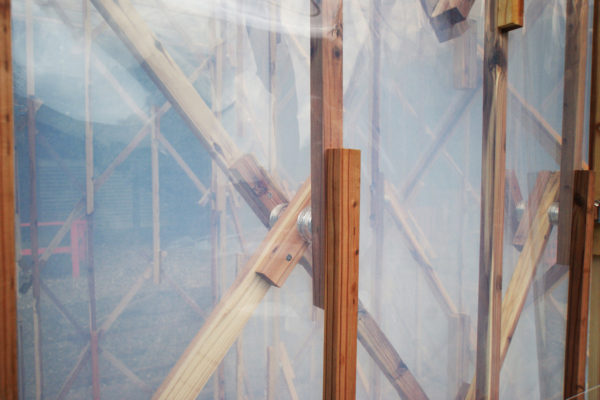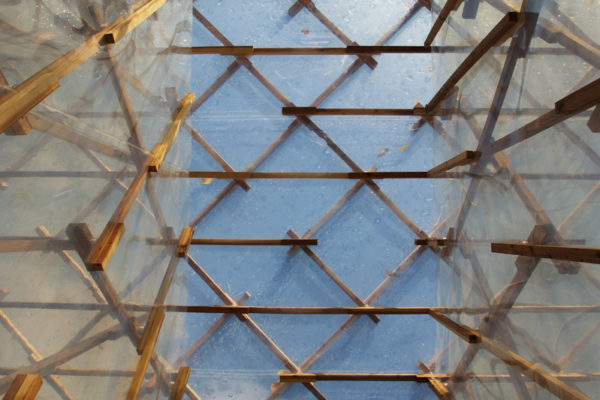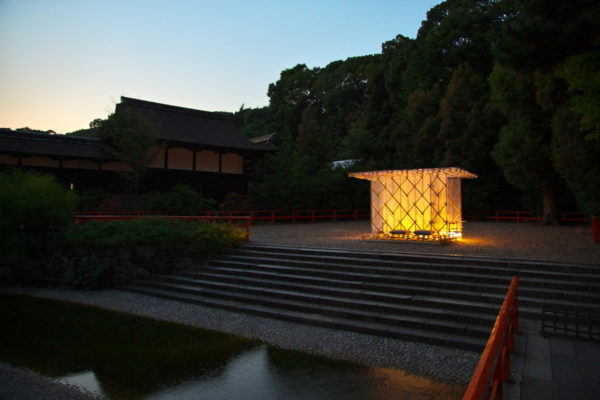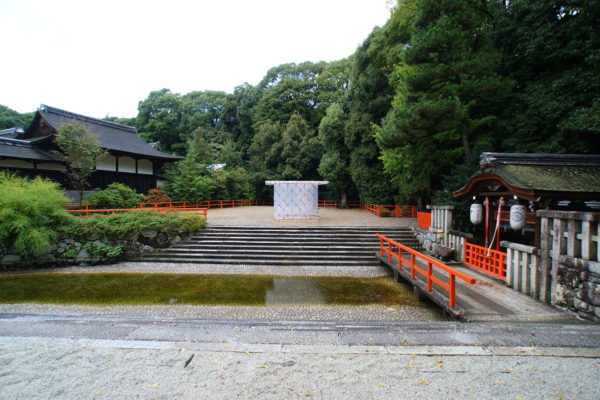Japan 2012Hojo-an after 800 years
Kamono Chomei (1155-1216), the author of Hojo-ki (An Account of My Hut), resided in a house which is often described as the prototype of Japan’s compact housing. The project aimed to reconstruct the house with modern idea and method, in the same site situated at the precincts of Shimogamo Jinja Shrine.
As the name “Ho-jo-an” literally explains, “Hojo” means a small humble cottage (appx. 3m*3m). This human-sized house, from which you intimately sense the nature, is a starting point of Japanese dwelling history. Kamono Chomei built Hojo-an as a movable house at the time of the turbulent medieval age in Japan. To emphasize his idea of “mobility,” we made a combination of ETFE sheets that can be rolled up and portable.
To each of the 21 sheet, a cedar material (section in 20mm*30mm) is adhered, and these bar-shaped wood pieces are firmly combined with powerful magnets, which work as a kind of tensegrity structure. The three soft sheets are combined to a single unit, and grow into a hard box.
